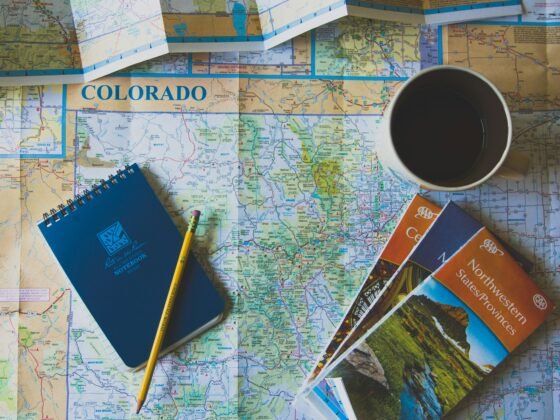The American South, territory that spans nearly 3,000 miles (4,828 km) from the wondrous Smokies and past arid desert landscapes starting in west Texas, is a perfect road trip for anyone who wants to see what the southern U.S.A. has to offer. It’s a route that could take about three days of barely non-stop driving, but with all the exceptional stops you could make along the way — from little-known roadside attractions, magnificent national parks to bustling metropolitan cities — not taking your time would be a wasted opportunity. Check out some of the interesting pit stops you can make on your American South, cross-country trek below.
The Great Smoky Mountains
The Great Smoky Mountains National Park, which spans the North Carolina and Tennessee border, is the most visited park in the U.S. and has some of the most diverse ecosystems in one geographic area. Roads wind through and around the park that lead travelers to well-populated pockets lined with bars, restaurants, lodges and gift shops as well as off-the-beaten-path, family-owned curio shops and restaurants with views looking out at and up at the magnificent mountain range. When in the vicinity of the Smokies, you can be sure that there’s barely a bad photo op in sight.
Atlanta
Atlanta has a rich Civil War history that concluded with the Battle of Atlanta, which left a completely devastated city and only churches and hospitals standing. To learn more about the Union and Confederate armies, visit Atlanta’s Cyclorama and the Civil War Museum, which features the world’s largest oil painting and a short film depicting the city’s most famous military conflict. A multi-level museum houses authentic period artifacts, such as weapons, photos and uniforms.
New Orleans
New Orleans is a must-see for those who have never been, and a must-see again, especially if your last visit was pre-2005 Hurricane Katrina. Tours of post-Katrina New Orleans is one way to spend your time here while avoiding the tourist-choked French Quarter.
A guided, narrated tour of the city can cover about 40 square miles and offers background information on the city’s history, architecture, levees and most infamous razed and recently rejuvenated neighborhoods, including Harry Connick, Jr. and Branford Marsalis’ Musicians’ Village, built by a local Habitat for Humanity chapter. To do the tour on your own, consult the Times-Picayune Interactive Graphics map for a real-time depiction of the storm’s devastating impact on the city below sea level. It will also give you an idea of where to go to view neighborhoods in various states of recovery.
Texas
While in Texas, the second largest U.S. state and the last green and hilly corridor of the American South, get an inside scoop on the origins of, “Houston, we’ve had a problem here.” Visit Houston’s Johnson Space Center, where crew from the Apollo 13 spacecraft transmitted their plea to NASA’s rocket scientists. Austin, a city proud of its “weird” ways, is a convenient stop to make halfway from Houston with the idea of taking a break in Dallas. The dozens of jet stream trailer food parks are so popular there’s a yearly event dedicated to the eateries. Indulge in everything from tacos to gourmet donuts at prices that challenge the adage “too good to be true.” Catch some travel R&R when you arrive in Dallas, which has one of the most distinctive skylines in the U.S., with its neon-green outlined Bank of America Plaza. And of course, there are numerous amazing Dallas hotels to stay in to experience Texas’ unique brand of southern hospitality first hand.
Arizona
It’s hard to say what the highlight of your American South road trip will be but when you stop at the Grand Canyon in northern Arizona, it will be hard to match this natural wonder — ever. Grand Canyon National Park is an authentic member of the Seven Natural Wonders of the World club and the only one on continental US soil. Visitors have the option of hiking to the bottom of the canyon, which requires at least an overnight commitment and reservation since the round-trip trek cannot be completed in a day, or you can do a partial hike down into the canyon where you will pass eons of geographical rock formations with each step you take toward the center of the earth.












